A lot of people consider Hong Kong to be the greatest cities of the world, but most are looking only as tourist point of view and they do not know the living conditions. Even some singaporeans think that living in Hong Kong is better, while some (more) hongkongers think that living in Singapore is better. Is Hong Kong richer than Singapore? See HERE!
Personally I appreciate Hong Kong for their efforts to build a city on improper, non-flat terrain, and also for several of the biggest engineering projects in the world history, but… I think that Singapore is overall better at living conditions.
Hong Kong is the city of contrasts and gigantic proportions, it also holds numerous world records. Examples: Hong Kong International Airport built on a 12 sq km artificial island, 4 enormous suspension and cable-stayed bridges, 5 underwater tunnels, biggest apartment buildings with smallest apartments, most expensive real estate, etc. The tunnel of Lei Yue Mun road under Sceneway Garden may be the largest tunnel of the world (~35 meters wide, no pillars). Hong Kong hold multiple times the record of most expensive apartment in the world, example from June 2008 and from October 2009.
Hong Kong population dropped from an estimated 1,600,000 to an estimated 500,000-750,000 during Japanese occupation during World War II, according Wikipedia. Apartment sizes were much bigger than today. After war, population rose quickly to 4,000,000 in 1970, mostly due to immigration from China. Hong Kong land measure 1,104 sq km and its population is 7,071,576 people at 2011 census, density about 6,400 people per sq km (similar with Singapore), but because of mountains, only 1/5 of land is developed, so the city itself is much more dense.
Macau land measure 30 sq km (half of it reclaimed from sea) and its population is 552,503 people at 2011 census. Density about 18,000 people per sq km.
Housing: due to rising population in 1950s and 1960s, most of pre-war shophouses were demolished and many high-rise tenements and apartment blocks were built, in Hong Kong island they are 10-30 floors, while in Kowloon the height was limited to 12 floors due to nearby Kai Tak Airport. Blocks covering almost whole plot of land, often featuring balconies hanging over street, transforming the streets into urban canyons, sunlight rarely reach the street level, you hardly find a piece of grass between buildings. Housing deficit was huge, thus smaller and smaller apartments were built. Residents altered buildings to use every space, old apartments were subdivided, balconies were enclosed and turned into additional rooms, caged balconies were added on building facades, huts were built on rooftops, etc. In Hong Kong the caged balconies were removed during 1990s due to risk of falling, but in Macau they are still present today.
Areas built up to 1980 looks ugly and dirty, due to lack of management, lack of aesthetic maintenance, balconies walled and enclosed according each owner wish, air conditioners hanging randomly on walls, rooftop additions, plus a lot of pipes, wires, cages, clothing racks, and other ugly objects hanged on external walls.
Urban Renewal Authority takes care of old buildings redevelopment, but most 1950s-1970s buildings are kept because they have high plot ratio and based on current laws they cannot be rebuild denser, only buildings in severe decay are demolished (for comparison: in Singapore pre-war shophouses are conserved while most of 1960s-1980s condos been demolished after only 20-30 years because new laws allowed higher density).
Housing patterns changed after 1980, most likely the government introduced plot ratios (limiting gross floor area to a ratio of land area) (does anyone know where I can find actual law?). Developers started building individual towers with small plot coverage. Bay windows are not counted in gross floor area, so they became common, while balconies disappeared, making Hong Kong to be nicknamed “city of bay windows”. Ledges for air conditioners were provided beside bay windows, thus no more ugly objects were hanging from walls.
Accurate statistics about average apartment size are not available, I personally estimate that apartment sizes dropped to 30-40 sqm in 1980s then rose to 40-50 sqm today. According khournal.org (2010), over 90% of Hong Kong families today live in homes smaller than 700 square feet (65 sqm).
Today, Hong Kong is the most vertical city in the world according Emporis Skyline Ranking, beating cities like New York, Singapore, or Sao Paulo in the number of high-rises (with over 12 storeys) or skyscrapers (over 100 and 150 meters in height), also beats all records of proportion of population living above any given storey number, but it has been recently defeated by Dubai in terms of supertalls (over 300 meters). See also Skyscrapers Database.
Landscape of Hong Kong is more beautiful than Singapore. Coastal areas are full with skyscrapers with impressive views, mountains are again full with skyscrapers with even more breathtaking views. Hong Kong may beat San Francisco at the number of very steep streets.
The massiveness of skyscrapers contrasts with the extremely small apartments, typical size is 35-45 sqm for 3-room and 50-60 sqm for 4-room. 3-room is most common apartment type, but today there are more 4-room under construction. Same for Macau too. Minimum ceiling height is 2.5 meters.
Once you leave Hong Kong Island and Kowloon, you enter in a very different world. New Territories include few “New Towns” less dense, but still with massive apartment towers. Unlike Singapore which is fully urbanized, HongKong also have rural areas, low-density village houses in New Territories, that foreigners call them “slums”. Hong Kong have lots of nature, scenic roads, forest walks, hiking trails, etc.
Price of typical, 50 sqm apartments vary from 2 million HKD (250,000 USD) in New Territories to over 6 million HKD in Hong Kong Island, even higher prices in Mid-Levels.
Urban planning in Hong Kong is worsen than in Singapore in my opinion, too much space is wasted with highways with their complex intersections. Also in New Territories there are too large open spaces, stand-alone or rows of apartment towers, rather than linear buildings like in Singapore.
Public transport is one of the best in the world. Mass Transit Railway opened in 1979 and as 2012 reached 175 km of lines, plus 36 km of Light Rail. There is one car per 13 people. Hong Kong won best airport award for numerous years.
My suggestions: better planning for roads, develop more flat land of New Territories, also demolish some of the hundreds of ugly villages and build high-rises.
Housing types in Hong Kong
Public housing history began in 1954, temporary and low-cost housing. In 1973 government announced programme to provide permanent housing, since 1990s slightly over half of population lives under Public Rental Housing and Home Ownership Programmer, as 2012 the percentage dropped to 46%.
Private housing estates and single buildings are home for other half of population.
Village houses are outside main city, limited to 3 floors, most of these houses are multi-family (apartments).
Villas means single-family residences, usually luxury, the number of villas is about 10000.
Rooftop huts are illegal residences commonly found on the roof of old private buildings and village houses.
Boathouses are the residence for few thousand people, dropping in recent years.
Hong Kong floor plans
For public housing of Hong Kong, the Housing Authority website added floorplans in 2010 for the HOS/PSPS/TPS estates. For private housing, search on developer website or Centadata.com which contains floor plans of most private developments built after 1980.
I compiled a list of floor plans by block type in Hong Kong public housing page.
Less known, Macau also have public housing: Instituto de Habitacao, but fewer estates (6,300 apartments) compared with Hong Kong (over 1.1 million apartments) and less percentage of residents living in public housing. I did not found much info about Macao public housing, floor plans seems to not be available online, but by measuring blocks in Google Earth, it’s obvious that the flat sizes are larger, probably with 25-50% compared with Hong Kong.
Older buildings (1950s-1970s)
Point mouse on images to see building name!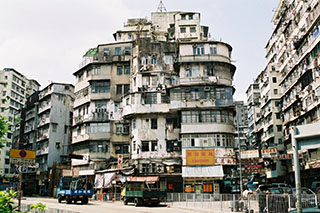
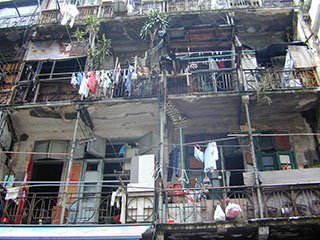
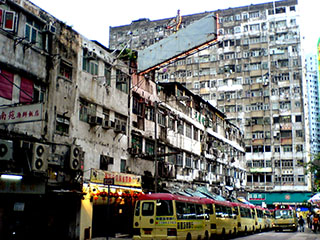
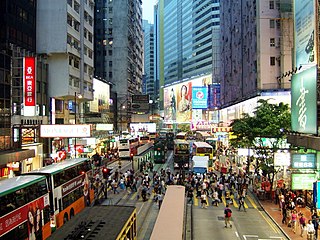

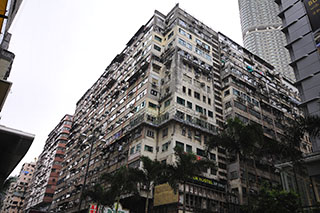

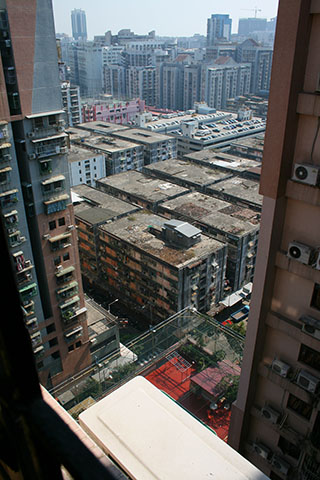
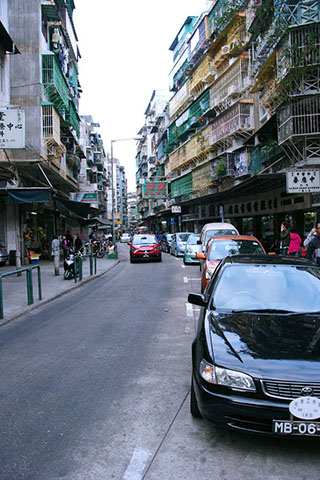
Many photos with old buildings on http://www.panoramio.com/user/4434668
and https://www.flickr.com/photos/acstudio/ (page 50+)
Newer buildings (2000s)
Point mouse on images to see building name!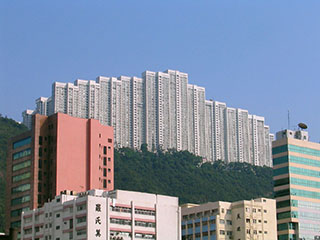

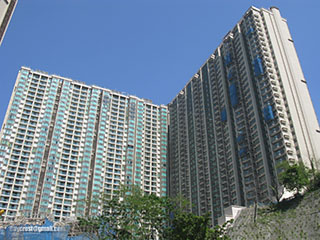
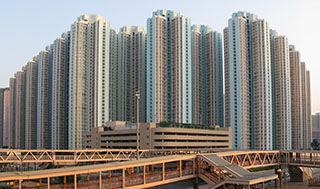
More photos with new buildings on Hong Kong private housing page.
Spectacular drone photos: https://mymodernmet.com/andy-yeung-kowloon-walled-city/
Hong Kong rural villages
Hong Kong villages exists mostly in New Territories but also in the remote parts of Hong Kong Island and Kowloon. Most of the “village houses” are composed by apartments too, probably 2-4 per floor. The government limit the height of villages to 3 floors, but due to housing deficit, numerous village houses have the roof terrace covered and converted in 4th floor, sometimes 5th floor. The village streets can be narrow as 1.5 meters (5-foot walkway). A common car park does exist in each village.
The single-family homes are called Villas and are not related with these villages.
Living in Hong Kong
Do you though that Hong Kong means luxury and high standards of living?
Hong Kong have biggest income inequality of developed countries: youtube.com/watch?v=K9yY1Pa2qfA (video deleted)
CNN report of cage homes, 90 people living in a 625 sq ft apartment: video. Is this a single case or are more buildings like this?
Families living in 40 square feet: photos.
A family of 4 living in 150 square feet, in a subdivided apartment: video.
Well-known video of Hong Kong architect converting a 30 sqm 3-room apartment into a studio apartment with 24 different room configuration possible.
Example of 16.4 square feet “apartment”: video (thanks EL for giving me the link). I do not understand if it is a promotional video or a news/research report, do you?
Quite obvious that the government PRH production is not enough, the waiting list for public housing is several years.
Amoy Gardens typical 1980s estate, including a video showing a shocking small apartment.
Symphony of lights – one of the most beautiful things to see in Hong Kong
Is the symphony of lights! Running every day at 8 PM, it takes 14 minutes. It is completed by fireworks in certain occasions (new year, christmas, etc).
Old video: https://www.youtube.com/watch?v=DcA_IHEEIBU (better compilation but not HD quality)
Page published for first time in 2009 and updated over next years with more information found by me or provided by visitors. Text written by me (Teoalida) and images taken from Wikipedia, Panoramio and other websites. Do you have useful information that worth adding? Did you found an error or have a contradictory opinion? Leave a comment!
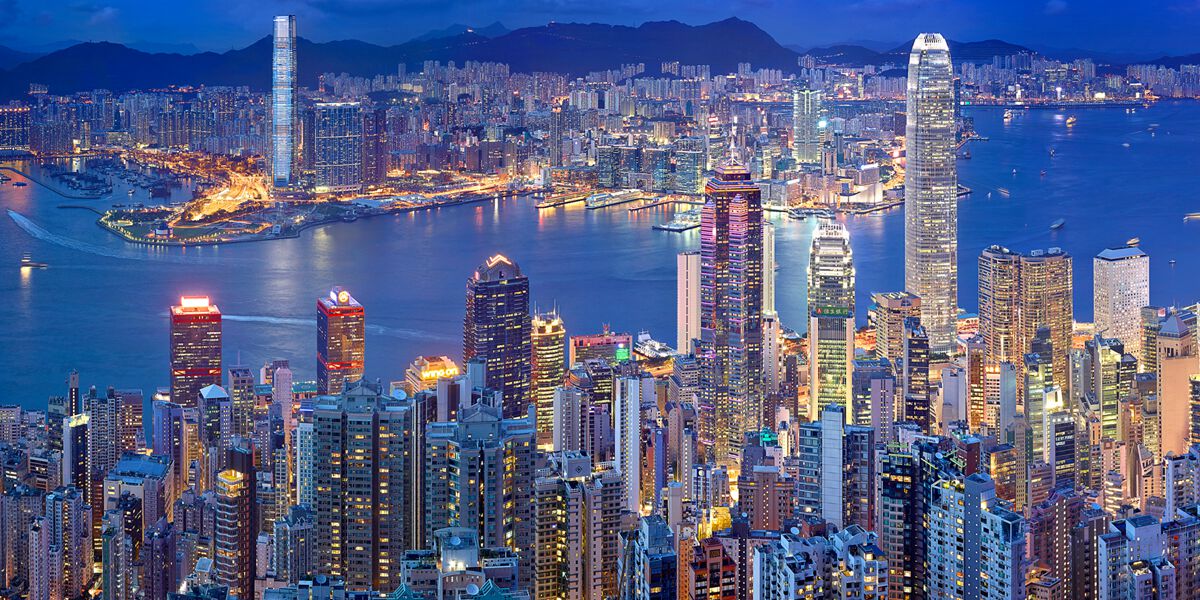
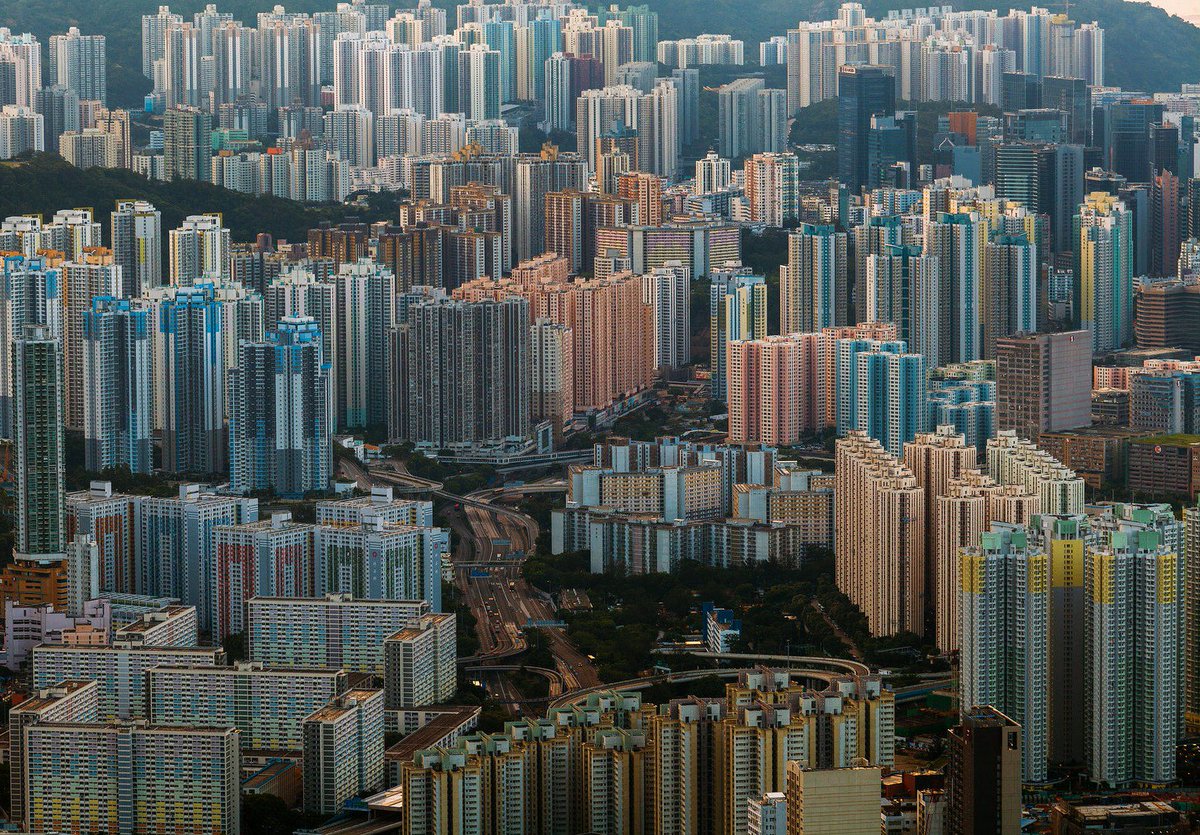
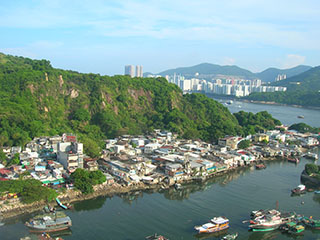
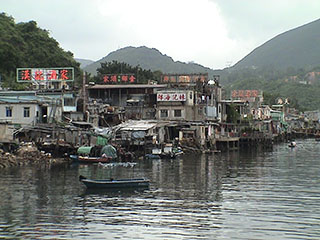
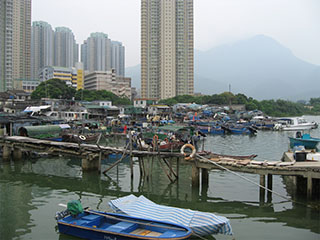
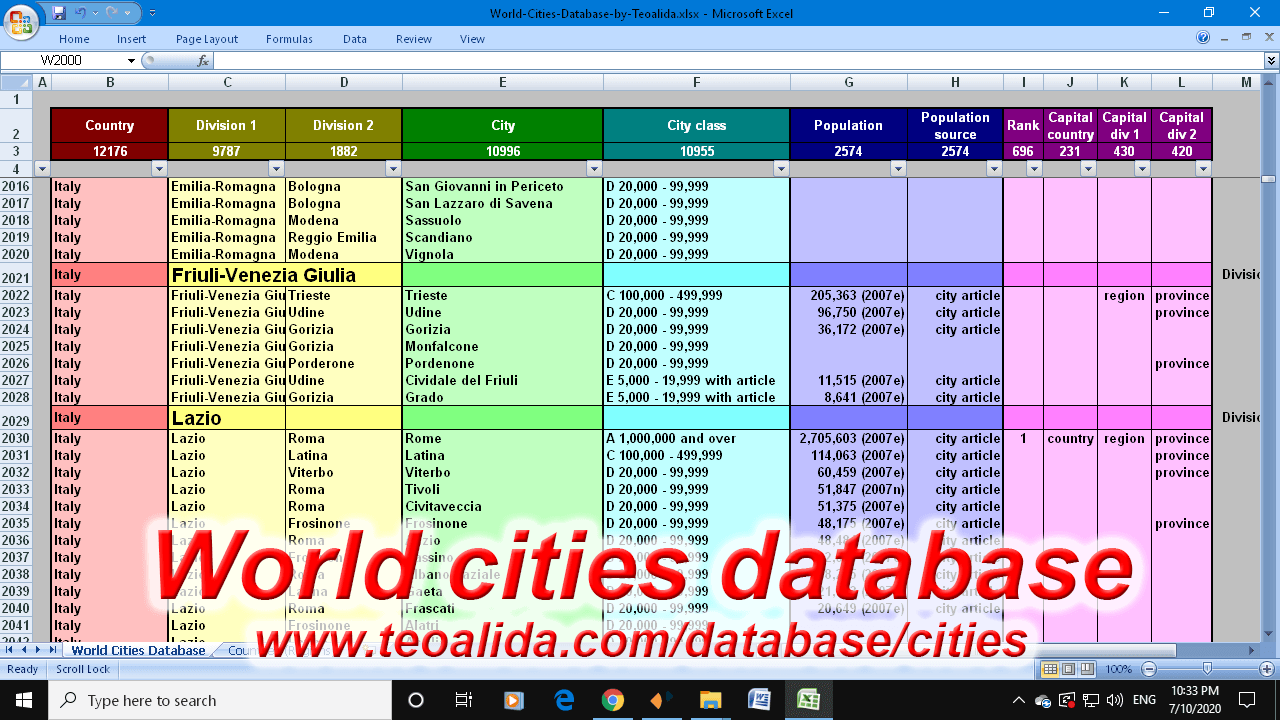
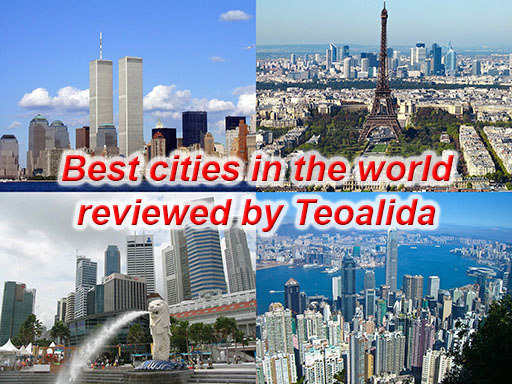
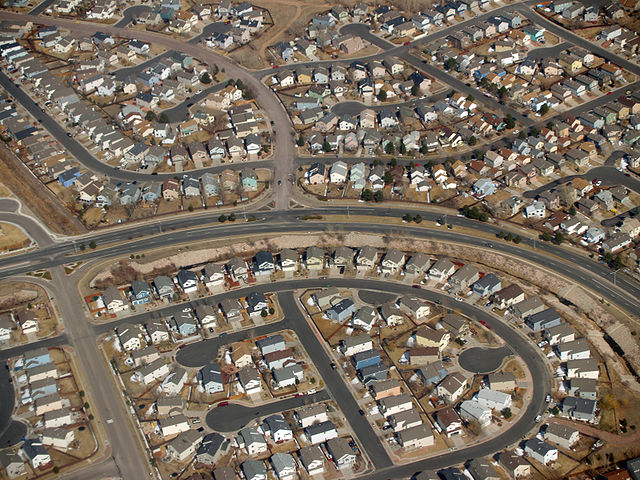
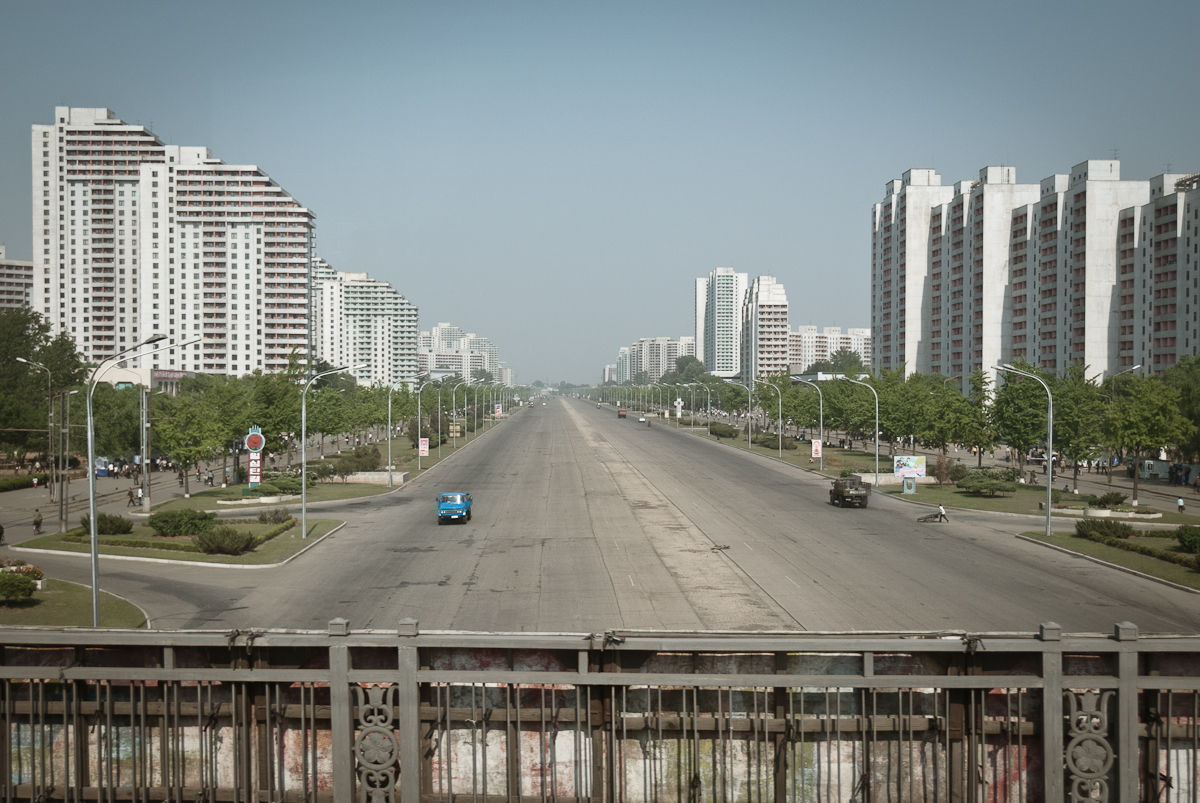
This page is very informative and interesting. But the website “Hong Kong Housing.xls” is not found. Can you re-direct it to the correct website? Thanks.
The reason why developers do not enlarge gross floor area is that the area is capped by the plot ratio, which is pre-determined when the land is sold. Selling just the max no. of “adequate-sized” flats gives the greatest profit.
In order not to reduce the attractiveness of the land, the government is very careful in imposing conditions of sale. Even if the no. of flats is not stated, nowadays developers will do a market survey to determine the most probable demands. Those very small flats are seldom built now, except for studio-style hotel-like flats for the young single families. By the way, my Excel program is ok but I still encounter the message “the website is not found”. Can you email the file to me at [email protected]? thanks
Share with you an interesting video posted in July 2011. It reflects the current high property prices of Hong Kong and the marketing strategy of property developers. Small flats are being sold as luxury houses priced at USD80K per square foot.
http://www.youtube.com/watch?v=qKf08vWTkKA
Thanks for the link. When he said 16.4 sq ft I was sure that is a mistake between feet and meters, but nooo… Incredible video!! Looks like a modern version of Cage Homes (youtube.com/watch?v=D5hlF2RYdY0 – dead link). But that’s not an apartment, it’s an illegally partitioned room, the corridor is less than 90 cm wide and the space is less than 5.5 sqm per person, so THEY ARE ILLEGAL.
Where they eat? I guess that a shared kitchen should be around, so they have to pay for a sharepart of hallway, kitchen, bathroom areas too. Or it is more likely an hostel like Chungking / Mirador Mansions rather than residential? But how the RENT is $100 per night? Who ever pay that, since Kowloon apartments are SOLD for $4000-8000 per sqft? What is the price of Public Rental Housing?
I am still confused about what caused this situation. Can a developer speak with the government to buy a certain piece of land when it wants, or should wait until a government land sale? If no, I think that the government should sell more land. But how is possible to see some buildings hanged on mountain slope, isolated from rest of city? I don’t think that the government sold only that piece of mountain. There’s a lot of empty land in New Territories, also demolish some landwasting villages.
I watched a lot of photos from inside of Hong Kong regular apartment (30-60 sqm), I love how they decorate them and optimize the space. Who the fuck needs a 100 sqm apartment? Guess what opinion I have about Singapore apartments now, after spending 3 months studying Hong Kong: they are useless big, people should stop complaing about shrinking sizes after year 2000 and take a look to Hong Kong. Also my own-designed Hong Kong Generation (look in Apartment Design page) is wrongly sized, too big…
But I don’t understand some things: most bedrooms are exactly 2 by 2 meters. A bed is usually 2 meters long and would be crazy to buy one and realize that it not fits by 1 cm. Also how can you put the bed perpendicular with door direction? No space to rotate it! Better buy just a mattress, you can bend it to fit and raise it during day time and lay a desk. How they store the dishes? Kitchen is small and cabinets are few, in Singapore is common to see 6-meter long row of both lower and upper cabinets. Also I rarely see desks or computers, bookcases or storage for toys. So how hongkongers they are spending their time? I never had friends in Hong Kong… you can be the first one!!
As a Hongkonger, let me respond to your questions in point form:
(1) The bed space shown in the Youtube does exist in some old urban buildings as the flat owners want to maximize their rental income. They divide their flats into a lot of small bed spaces for renting out. It is illegal not in the sense of amount of area per person, but in the sense that fire regulations are violated.
(2) Kowloon apartments, if newly built, can be sold at more than HKD10K per sq ft. The reason why that Youtube was made is that some young people of HK do not like the current situation where property prices are high, and all kinds of flats are packaged as “luxury” homes. The property developers use marketing tactics to package their products. The look and feel of real estate marketing materials are sometimes quite misleading!
(3) A public rental housing flat in HK can be rented at about HKD1K to HKD4K per month, depending on size and type. Old type, small size are cheaper.
(4) The HK Government sells land by tender or auction. Developers have to compete against one another in submitting a bid. That is why land prices are very high.
(5) There are a lot of empty lands in HK, which are not yet developed, because it costs a lot to build roads and utilities. So, the Government’s priority is to develop lands that are near the trunk roads and are served with utilities. The buildings so built are also popular as people like to have short travelling distance when going to work. The urban areas are surrounded by hills and slopes. That is why some lands on the slopes are utilized to build new flats, while some empty lands in the rural areas remain empty.
(6) The 2m x 2m bedroom is a strange phenomenon. Property developers package their products as “3-bedroom unit” or “4-bedroom unit”, but they do not want to make the prices too high. So, they build the smallest area of bedroom, which is 2m x 2m. But I can tell – many of the buyers do not like this kind of small bedrooms. Some demolish the wall to combine 2 rooms together. Others place the bed on the projected window sill (700-800mm deep) in order to get more usable floor space.
(7) Small kitchens are another phenomenon. We use L-shaped cabinets, with a total length of about 8 to 13 feet. The cabinets have upper part and lower part. Upper part is hung onto the wall. Lower part is below the sink or the cooker.
(8) Working desk and computer – for new flats, many occupants utilize the projected window sill (700-800mm deep) as desk for reading books and placing personal computers. Or some may utilize the dining table for working. Or some just sit on the sofa to read books. Or place a notebook computer on the small table in front of the sofa.
Here is a video showing the typical big window sill of new flats sold in Hong Kong: youtube.com/watch?v=uBjkhxiu6CE (video deleted) We sometimes place a flat cabinet (with drawers) on the window sill to make its top surface higher. Then books can be stored in the flat cabinet. Or some people demolish the brick wall and use wooden bookcase as partition walls. Other purchase multi-purpose furniture, e.g. some L-shaped sofa has one of its sitting surface openable – when you open it, you find a storage space below. Some use double-deck bed – the lower deck can be used as a work desk and a bookcase. Some double-deck bed is integrated with side cabinets. In brief, furniture designed by HK designers is usually more versatile than furniture imported from Europe. It is small-sized, but can store a lot of things.
Sorry for stopping replying, last time I wasted 1 hour to write a huge reply and when I posted it, it gone! Due of Webs.com issues no comment could be published that day. The bug was solved next days but I was frustrated and didn’t rewrote it. OK… let’s continue now.
I know what do you mean with versatile furniture… because I am designing SUCH THINGS, I can be a good HK furniture designer? But I never saw such things in Hong Kong, the problem may be how to insert a 200×80×180 cm thing through a 70 cm wide door. Also would be crazy to buy a regular 200cm bed and realize that it didn’t fit due of 1cm, due of a power outlet, etc. Is also impossible to bring it into pieces and assembly it in a 2×2m room because no space to rotate. Better just buy a mattress which could be bend, and raise it during daytime.
Yes I saw cabinets on bay window sill, but placing the bed on it.. hardly, since only few and recent projects have bay windows for entire width of room. I know that kitchens have both lower and upper cabinets, but is still not enough… look how many cabinets are in Singapore here and here. Did all Hong Kong computers are laptops?
Apartments packaged by number of bedrooms? I NEVER saw that, everywhere I am looking I see them presented by gross floor area. I rather think that they are trying to fit as many apartments possible on every piece of land, this is why I see numerous new studio apartments on Hong Kong island. I don’t see strange the small bedrooms, they want to save space for a much bigger living room. I don’t think that you will like to have 2 sqm added to each bedroom at a cost of 6 sqm from livingroom. But I am sure that people hates the overall ratio of sqm per number of rooms, they will like bigger bedrooms to fit a desk beside bed and wardrobe, but also bigger other rooms. Contrary at what you said, I see some apartments have provision for extra bedrooms, probably to build yourself, rather than being sold with max number of bedrooms. For example Indi Home, most apartments are presented as 1-bedroom but they are designed for 2 bedrooms.
April 2012 update: XLS file updated, 2 new floorplan links added, removed the “More photos SOON” that I forgot to remove 1 year ago after I added all best photos. Also corrected numerous spelling mistakes… why nobody reported errors?
Octomber 2012 update: fixed links of floor plans, plus some text improvements. Housing Authority changed structure of its website, causing my links to broke, I do not know how long they were broken, but only today someone reported me. Thank you!
The Shek Kip Mei fire was on Boxing Day not Christmas
http://en.wikipedia.org/wiki/Shek_Kip_Mei_Estate says that the fire was during the night of 24-25 December 1953. When is the Boxing Day?
boxing day is 26th 🙂
Hong Kong does not employ foreign labour in construction. See Khaw Boon Wan’s blog. They are very productive, but the labour cost is high, which is also why they are very productive. Therefore, I think that is the reason why each unit is small, standardized and expensive because the cost of construction is high….to improve productivity and therefore incur less wastage and construction cost, the units are standardized, pre-fabricated and built to assemble, therefore there are many small units to maximize profits for developer.
Singapore make use of construction workers from Thailand, China, Indian and other developing countries, so we have lower cost, but also lower productivity
Hello ! Nice to meet you ! I am an assistant director of architectural design firm in Hong Kong who are interesting in public housing design.
About the drawings of Hong Kong Housing Society(HKHS). You can get them from BRAVO website from Buildings Department. Rental blocks and saleable blocks are included.
Also I have some articles suggest you to read :
1.) Wikipedia about Hong Kong Housing Society ( I always update it ) –>
http://zh.wikipedia.org/wiki/%E9%A6%99%E6%B8%AF%E6%88%BF%E5%B1%8B%E5%8D%94%E6%9C%83
2.) The Hong Kong Housing Society, Charity Begins at Home, Jo Doyle, Building Journal, November 1995, pp.68-92
3.)Hong Kong Housing Society Annual Reports, 1951 – 2012
4.) Hong Kong Housing Society Today, 1999 – 2012
5.)Sales brochures of Hong Kong Housing Society’s properties
6.)General Buildings Plans of Hong Kong Housing Society’s properties ( Approved by Buildings Department of HKSAR Government )
Also I have loads of drawings, information about Hong Kong and Macau Public Housing estates. I can share and disclose some of those non-confidential information for you, if you need. But some of them are written in Chinese. If you can understand Chinese, it will be better.
Another non-official public housing website is “Cyclub” –> http://cyclub.happyhongkong.com/index.php
This website is aim at public housing design, decoration and the daily life of public housing estates residents. Unfortunately, Chinese website again……
Some of my friends and I always put loads of drawings of existing /new-build / future public housing estates. Come on, take a look and explore more.
I hope those stuffs can help you understand more about the development of Hong Kong Public Housing.
Sorry for delay in approving comment, it was blocked by SPAM filters probably due of links.
Can’t understand chinese but I frequently read articles about housing in other languages, and I understand a lot only by looking at images. I have read that Wikipedia page using Google Translate… nice info!
Thanks a lot for sharing all these with others. I really appreciate it!
Hi teoalida, may i know what u work as? Im still a student and i find ur research fascinating & i may want to do this field in the future. Hope u can reply. :))
I don’t have any job, only freelance projects like this research. Read ABOUT ME page.
Great information.HongKong is a good city.It looks like it’s a great place for real estate investment.